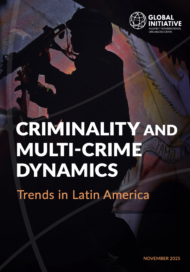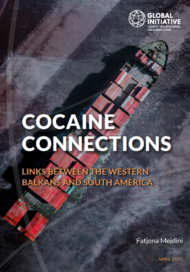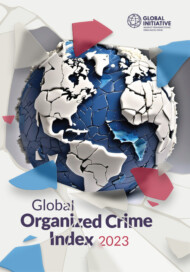Posted on 05 Nov 2025
This report outlines key regional dynamics shaping organized crime across Latin America and the Caribbean (LAC), drawing on the main trends identified in the Global Initiative Against Transnational Organized Crime (GI-TOC)’s Global Organized Crime Index (2023). The report looks at the political and socio-economic context of LAC, highlighting structural weaknesses that have been exacerbated by political volatility, limited state control over borders, high levels of violence and ineffective law enforcement.
These conditions have enabled criminal actors to consolidate power, infiltrate state institutions and diversify their operational scope. Economically, high levels of labour informality and socio-economic inequality have pushed vulnerable populations to participate in illicit economies, further entrenching criminal markets. Meanwhile, widespread crises in prison systems throughout the region have turned penitentiaries into hubs of criminal governance. The convergence of these factors, along with an expanding network of transnational crime alliances, underscores the growing complexity of organized crime in the region.
These structural drivers and criminal dynamics help explain certain trends in criminality and resilience observed across the region. As Figure 1 illustrates, there are distinct regional patterns. Caribbean countries generally fall within the quadrant of low criminality and medium-to-high resilience, reflecting relatively stable environments and stronger institutional responses to organized crime.
By contrast, much of South America – such as Brazil, Colombia and Venezuela – is located in the quadrant of high criminality and medium or low resilience, revealing both the consolidation of illicit markets and limited state capacity to contain them. Central American countries like El Salvador, Honduras and Nicaragua, meanwhile, are concentrated in the quadrant of high criminality and low resilience, making the subregion particularly vulnerable.
An alert should be raised for the Southern Cone. While the indicators are generally favourable, with Uruguay standing out for its high resilience and low levels of criminality, both Chile and Argentina are approaching the threshold for high criminality, despite showing intermediate values. This trend raises concerns about their potential future deterioration. The worst-case scenario is illustrated by the lower-right quadrant, which includes countries with high criminality and low resilience, such as Haiti, Nicaragua and Venezuela. These countries are characterized by weak institutional structures and severely limited state capacity to respond to organized crime.




